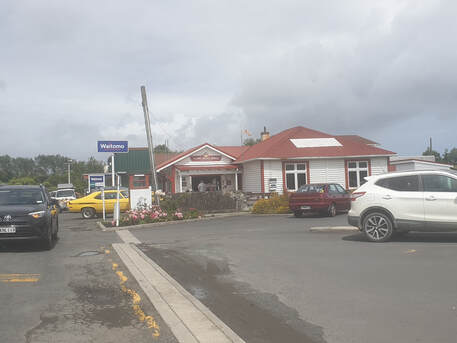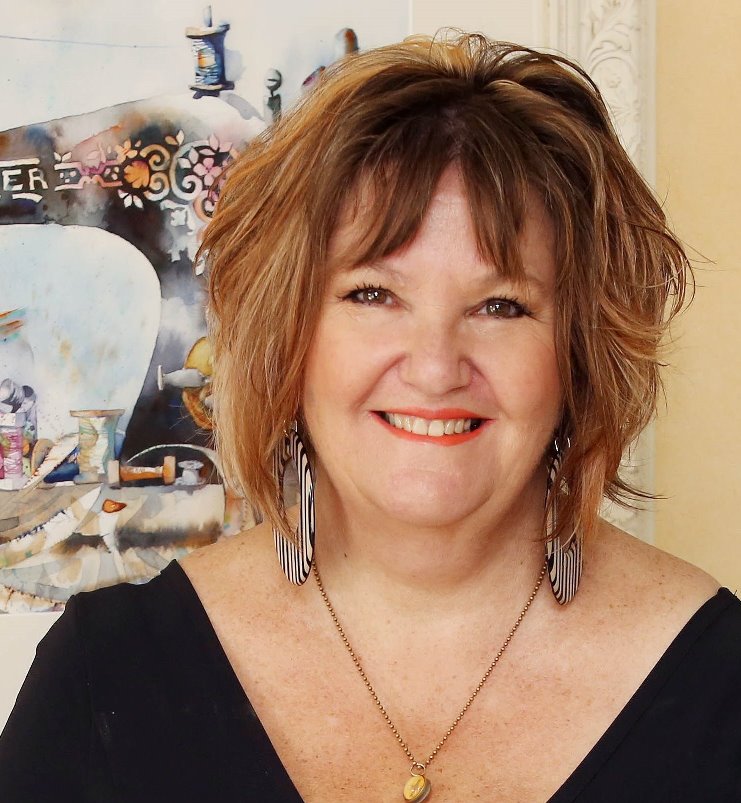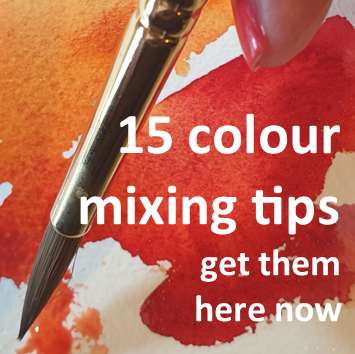|
Edited from Original post 251114
I painted with a tutor for many years as a serious-hobby watercolourist while I continued to work in my corporate career. The great thing was, I would turn up to art class and she would have the subject all prepared for us: real-life objects, photographs, magazines, warm-up materials and ideas. We would have a big discussion about the subject and view it from several perspectives - she did a tonne of research and put many hours of thought into every session - how grateful I am!! Although this was a fantastic resource at the time, this reliance became a burden I was not aware of. I found I could make time to paint but when I actually got to my studio time, I HAD NOTHING TO PAINT! I was so reliant on someone else providing my subject that I didn’t know what to do to sort myself out. I hadn’t given time to subject selection so I would be completely stumped!! Now I know why artists spend time drawing and painting their own hands and feet – because they’re there and they’re handy!! This ‘problem‘ hit me again later when I studied with another tutor who had a completely different style. I was on my own having to bring my own subject matter. I had no-one to rely on but me … this was how ‘writer’s block‘ came about, I had nothing to paint but I did have my painting gear right in front of me, lol!! The more I look for subjects the sooner they appear. The more I paint the more ideas I get. have fun!! cheers Amanda www.amandabrett.net
0 Comments
A huge question don't you think?
But so important, it helps us to redefine our goals, values and priorities, what we want and how to articulate it. For me (and I'm sure you too) the past 2 years have brought quiet and solitude (a bit too much - I want everything in exactly the right measure - it's all about me!). I've had unprecedented amount of painting and creating time (not used wisely) plus a weird type of stress and overwhelm. Several years ago, in my wisdom, I decided that a new path forward for my teaching was online, the good thing about lockdowns etc, I've learned that my passion is about helping my students become the creatives they want to be not creating clones of me. I see that as no value to you at all, further it means a constant dependence on me and no way forward for you (this is a similar reason why so many art school students struggle to forge their artist's careers). So what do I want? I want more creating and painting time. Fortunately for me, a restructure of our main business unit in NZ means I have less work to do - yay!! More time to play and see what emerges - a year of using up lots of paper!! It also means I can be in my studio at 7am (jammies and all) to start my daily creative process. The good thing about writing this down (longhand is always best) is the re-embedding in my brain and my heart. I've really struggled with motivation these past 2 years, everything has felt 1 step forward and 2 back, my next big birthday is looming - time to pull myself together! I want to go out and sketch more, I want to see more of my hometown and NZ (and the world!) - new aspects of familiar things; a good thing about lockdowns? they've taught us to slow down again! So what do I want from my teaching? Actually, the question is what do I want to give to my teaching this year? How can I make it better? My job this year is to help you learn to see - to broaden your painting and creating horizons and see the possibilities, right down to the nitty gritty of understanding your subject; to see there are many ways to paint watercolour and every one of them is the right way. I want you to see that every subject you draw or paint, prepares you for your next drawing and painting. Every drawing and painting is a cornerstone for your learning. what do you want from your art this year? what aspects of your art do you want to work on? What do you want to learn? Dica mi – tell me!! Amanda Sign up for weekly Watercolour classes here 
Edited from original post 140119
I've been listening to lots of podcasts from artists who love painting en plein air like I do - the interesting thing is, I come from the school of painting what should be there but most of the artists I've been listening to seem very focussed on determining the exact shade of colour (temp and hue) and the exact value of each shape and finding the right scene/subject. I find that to be totally tiresome and tedious, at best, a form of procrastination. When I discover a scene/subject to paint, I can guarantee you I will feel the need, rightly or wrongly, to shift some things around (lamp posts are never in the right place), and change colours and values to suit my idea. I have 2 thoughts about this, firstly, I am NEVER going to find the perfect scene so I might as well get down and dirty right now. Secondly, I am an artist, it's my job to make whatever it is beautiful and meaningful and tell my story through paint. Imagine how many hours I would lose just by simply wandering around looking for the right scene/subject? Most often I have 2-3 hours to paint on location, I better make it snappy. Don't get me wrong I deliberately go to places that I know will please me (crusty, rusty and horrible are the key words here) and I do like it when someone chooses for me and gives me a challenge - its all too easy to fall into the trap of painting the same things over and over. Back to WHAT SHOULD BE THERE. So what should be there? well that's up to you to develop your skills of observation and your sense of good taste and design and what you love. While in Raglan NZ recently, I went to paint the orange dinghy - how disappointing ... i could barely tell it was orange ... back in the day, it positively glowed and reflected into the bay, not only that, the fab building behind it doesn't exist!! My biggest problem is I believe my own press ... I really remember the house being an architectural wonder but I think i painted it that way many years ago and the painting is stuck in my memory!! So I decided to paint the old Dairy Factory behind the nasty building, it's obscured from every vantage point so I'm going to have to make it up, there will be ladders and brooms and mops and buckets, maybe a bloke walking by with a fishing rod. What i really need to consider is how important is the Dairy Factory and if i decide it's very important then i will have to decide what elements I will need to help me communicate "Dairy Factory" without getting naff or kitsch!! The secret message today is, use the scene/subject/photo as your inspiration, not something to be copied faithfully, just because it's there doesn't make it right for a work of art, if they brought back bell bottoms would you wear them? Give your artistic license a whirl!! ciao i miei belli amici!! Amanda Live classes start Feb 8 2022, Auckland New Zealand JOIN UP HERE |
AuthorPaintBox Tips, secrets, random thoughts, Poetry in watercolour is made in the freedom of the here and now. Amanda Brett Inspiration exists, but it has to find you working - Pablo Picasso There are no mistakes in watercolour, just some extra surprises!! Categories
All
What my readers and viewers have to say
Your emails are so informative! I must confess I've watched a couple of your demos from beginning to end, and it makes me want to watercolor!!! I've only ever painted with oil or acrylics and haven't know how to begin with WC. Your content is excellent!
Susan VN Hi Amanda
Thank you for your tips. They inspired me to practise and I realised I haven’t been loading the brush properly. I learnt about adding more paint, and not water, to washes. In today’s tips I like the idea of painting with purpose. Your tips are very helpful. I very much appreciate receiving them. Elizabeth Hi Amanda I enjoyed your post and generous tips. Looked up Dan Burt I begin to see that you can colour any subject to give it pizazz so long as the tone and form is correct Certainly adding value now to my attempts Thanks heaps Annie
Yes very wise words. Agree with not fussing and agree with comments about good quality paint. Well written and inspirational as always. Cheers Janet xxxx Archives
July 2023
Copyright © 2022 All images and text on Amanda's blog and website are the the legal property of Amanda Brett and may not be reproduced without express permission from Amanda Brett or her authorised agent. Thank you for respecting her art and the livelihood of all artists.
|


